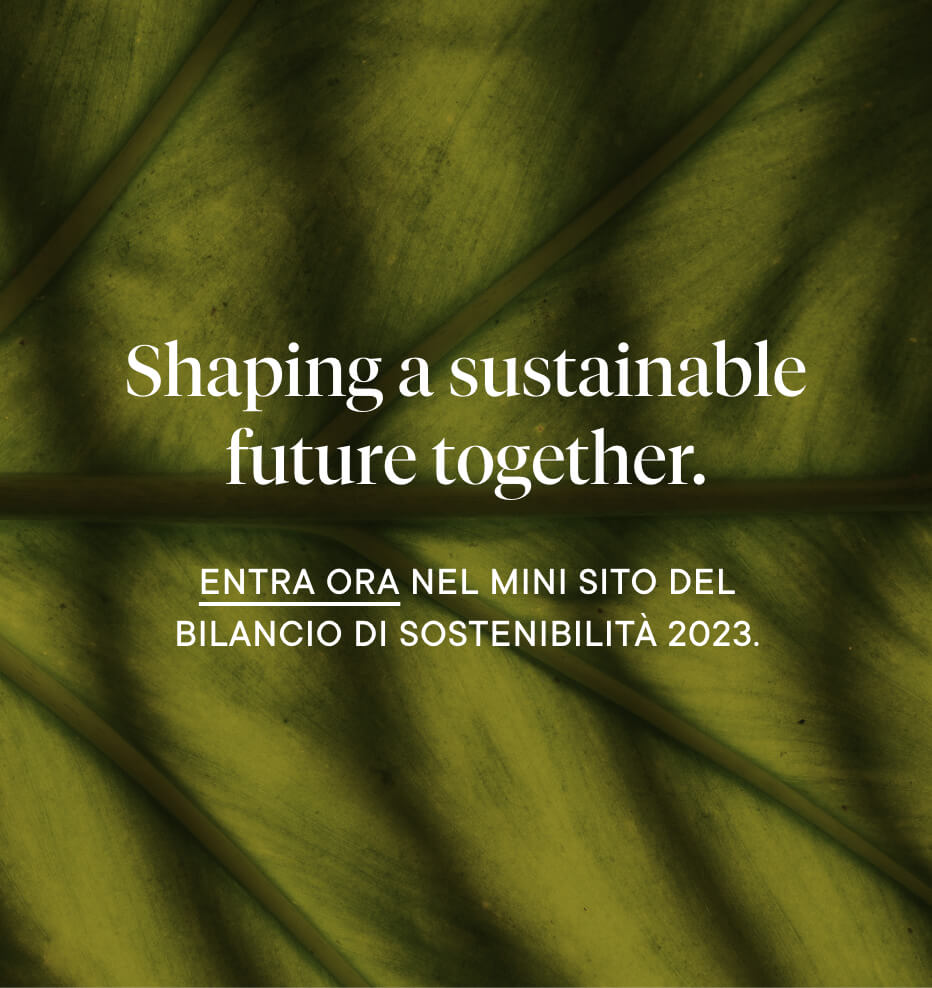Knowing in order to choose
View allGenuine leather and alternative materials
Leather is perhaps the oldest example of a circular economy in human history. It is a renewable, nature-based material that has been used for thousands of years for its strength and durability characteristics. Raw hides are a by-product of the food industry, which are recovered and transformed into a material of the highest value through a process that has become increasingly green over the years thanks to continuous investment in research and development.
However, there are surrogate materials on the market, presented as "alternative" and "environmentally friendly," made for the purpose of simulating genuine leather in appearance and feel, which are sometimes deceptively referred to as "leather," despite the fact that this term in Italy is protected by Legislative Decree No. 68/2020, "New provisions on the use of the terms 'leather,' 'skin' and 'fur' and those derived from them or their synonyms..."
But can these materials really be an alternative to real leather?
To answer this question, the German research institute FILK analyzed 9 of the materials most often advertised as alternatives to leather, comparing them with both a material of fully synthetic origin (PUR) and a sample of real leather. To this end, FILK conducted a series of comparative chemical-physical tests, the results of which were collected in a recently published paper showing that none of the materials tested exhibits overall performance comparable to that of real leather. In addition, it was found that, contrary to what is advertised, some of these surrogate materials contain mostly synthetic components, raising doubts about their real ecological and environmental impact.
According to the study, these new materials can be divided into three macro-groups:
- Natural fibrous materials (for example, "Muskin®," a material derived from subtropical fungi)
- Mixed synthetic/vegetal materials
- Natural fibers coated with polymers obtained from biomass.
Tensile strength, flexibility, tear strength, permeability and water vapor absorption tests have shown that none of the alternatives tested can really replace genuine leather. In fact, in none of these materials are simultaneously found high mechanical and flexural strength characteristics with high vapor permeability as in leather.
Leather performance in FILK's research results
The results of the study are clear: as of today, the performance of real leather is far superior. There is no alternative that can compete, and none of the materials tested can truly be an "alternative" to leather. Moreover, some of these materials, which leverage so much green marketing, are not nearly as environmentally friendly as they claim to be, being mostly composed of plastic material.
Leather is a by-product of the breeding industry of which very little is thrown away (the tanning supply chain also includes companies that process the components that are eliminated in the different processing stages, to obtain valuable raw materials for other industries), the different sensibilities that have emerged around this material with a history stretching back thousands of years have given rise to new ways of understanding it or process it, and this is why we propose a leather by defining it as sustainable.
Leather is an extremely durable material and has very high hygiene characteristics. First and foremost, it promotes transpiration, preventing the development of fungi, mold and all those microorganisms that proliferate in humid environments. In addition, thanks to its structure, it boasts thermal insulating properties and is also a good electrical conductor. To these properties are added, then, more "frivolous" but no less important factors: leather, in fact, is beautiful to look at and pleasant to touch.
Being a precious material, of course, it has a rather high cost. For this reason, attempts have been made, and are still being made, to synthesize an alternative material that possesses the same characteristics as "real leather." So far, the results have not been satisfying, at least in relation to functional characteristics; on the level of mere aesthetic imitation, however, the synthesized materials are so convincing that they have required specific legislation in defense of the consumer, defining which materials can be defined as "leather" and which cannot.
At this stage, you might think that the synthetic materials mentioned above are the eco-leather and synthetic leather-like materials mentioned earlier. Wrong! Or rather, right in the middle.
Eco leather
Eco leather is often understood as ecofriendly leather of industrial origin, and its name is used as a synonym for imitation leather. Those who preferred this material to protect animals will not be happy to learn that eco-leather is actually leather of animal origin tanned using environmentally friendly methods according to UNI 11427:2011.
In short, the environmental friendly nature of faux leather concerns the agents used during the tanning and disposal product, which are strictly low environmental impact. Animal leather treated in this way is even more valuable and, therefore, more expensive.
Eco-leather is characterized by its uneven color, its natural imperfections and marks, its extreme softness, and its long life. It has, of course, downsides as well: the first is its higher cost than regular "real leather"; the second, a corollary of the first, is its poor availability, since not all tanneries produce it and not all retailers "can afford" it; the third is that it requires constant maintenance so that its appearance remains unchanged over time; and the last is that, when exposed to sunlight, it tends to change its color.
The synthetic leather-like material
Artificial leather, or faux leather, is the only product that has nothing of animal origin. It is an industrial product made of a cotton or synthetic fiber cloth on which a film of plastic material (generally, polyurethane, indicated on labels as PU) is " spread"; the film is then imprinted--by means of a special press--with the distinctive textures of different leathers, so as to imitate to perfection the characteristics of real leather.
Among the advantages of faux leather are its enormous affordability compared with genuine leather and faux leather, its ease of cleaning and maintenance, its water repellency, and its resistance to light and heat. Faux leather, however, also has disadvantages: first, it is a non-breathable fabric, since one of the layers-the upper one-is, in fact, a plastic resin; second, it lacks softness to the touch; and third, but not least, is the fact that with wear and tear, the upholstery film tends to flake off and allow a glimpse of the fabric underneath.
This last consideration might be less crucial in the case of clothing, which we are used to vary daily and replace according to fashion; in the case of furniture items, which, usually, we expect to change after several years of use, it should, however, be taken into account. When buying a sofa, armchair or imitation leather seats, it is right to do so with the knowledge that, in the face of immediate savings, we will then have to incur an expense to replace the upholstery or directly buy a new product.
Vegan leather
To define a leather as "vegan," it is not sufficient that it is not of bovine origin but must certify the total absence of any component, at all stages of production, derived from animals. At the same time, a "vegan" leather is not necessarily natural: a leather that is 100% petrochemical-derived is easily certified as vegan leather.
Vegetable leather
Vegetable leathers are made entirely from "other" surfaces, such as wafer-thin veneers of different woods, cork sheets, or the top coating of mushroom caps. Each of these materials is processed through specific and particular processes, often of high technological complexity.
"Cultivated" leather
This is a very broad family of materials that includes a range of products, many of them still experimental, obtained through biotechnological processes of transformation of matter that make use of bacteria, enzymes or other microorganisms. To this group belong leathers obtained from mycelium, fermented tea, and the development of artificial proteins; they represent the vanguard of research toward a completely new type of materials.
Talking about deforestation or knowing where the leather actually comes from?
Find out more

